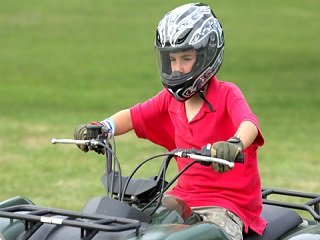 A new study published online November 24 in the journal Pediatrics should serve as a warning for parents considering gifting their kids with an ATV this Christmas. The study says that riding ATVs comes with high risks of injury – and even death – for children and teens, with the dangers differing by age. Kids and teens who ride adult-sized ATV’s and those who don’t wear a helmet and other appropriate safety gear can face devastating injuries.
A new study published online November 24 in the journal Pediatrics should serve as a warning for parents considering gifting their kids with an ATV this Christmas. The study says that riding ATVs comes with high risks of injury – and even death – for children and teens, with the dangers differing by age. Kids and teens who ride adult-sized ATV’s and those who don’t wear a helmet and other appropriate safety gear can face devastating injuries.
Riding comes with responsibility, and minors generally don’t have the cognition or physical maturity to operate adult sized ATVs. These machines weigh hundreds of pounds and a child’s smaller body mass makes it far more difficult to balance the vehicle by weight-shifting. Their hands also might be too small to fully grip the steering and to operate the brakes. And shorter arms and legs means they have less ability to turn the vehicle and to absorb shocks from a bumpy ride, and are more likely to be launched off of the ATV when it hits a rut or bump.
Riding an ATV requires strong concentration, good decision-making skills, mature behavior, and an understanding of safe riding. The study noted that 60% of the ATV-related deaths in young people occurred while children or teens were riding on roads, which the vehicles are not designed to do. It identified top reasons – all preventable – responsible for the increase in youth-related deaths and injuries that accelerated between 2000 and 2004, according to data from the U.S. Consumer Products Safety Commission. Those reasons are: riding adult-sized vehicles, riding on roads, carrying or riding as a passenger, and not wearing a helmet.
Wearing a helmet could reduce fatal injuries by half, and non-fatal head injuries by more than 80%. The study reports that states with helmet laws have improved safety behaviors for all ATV riders and drivers. The study also makes a case for engineering improvements in safety, such as shorter seats and requirements to meet higher stability standards.
With ATVs getting heavier and faster, it’s up to parents to be aware of the risks and communicate them to their children, and to make responsible decisions for the safety of their kids.








